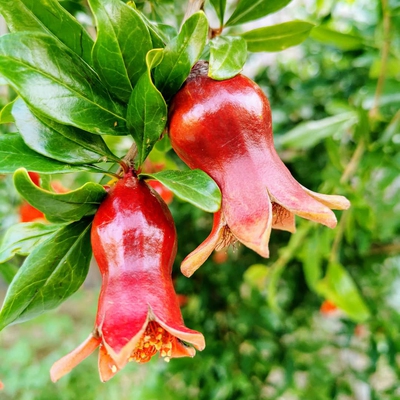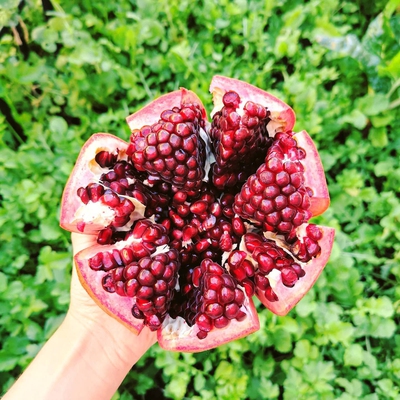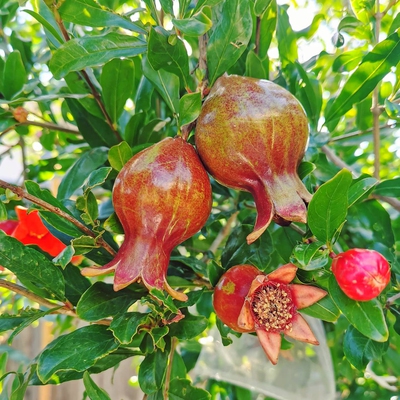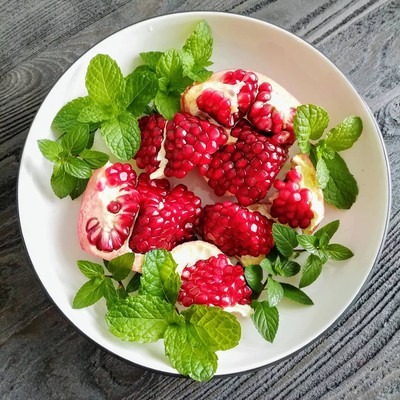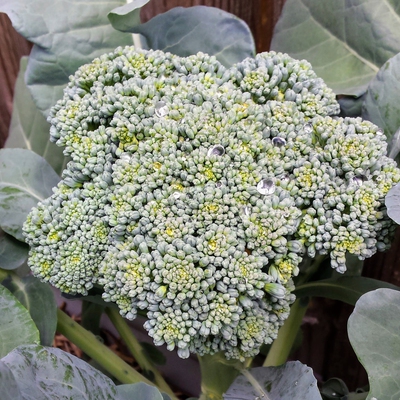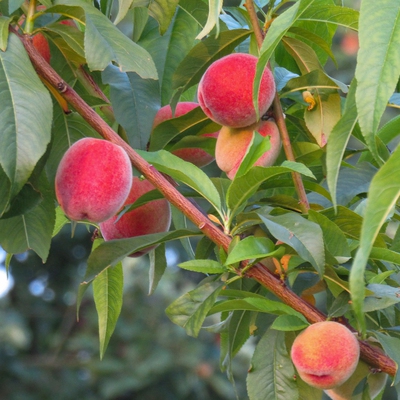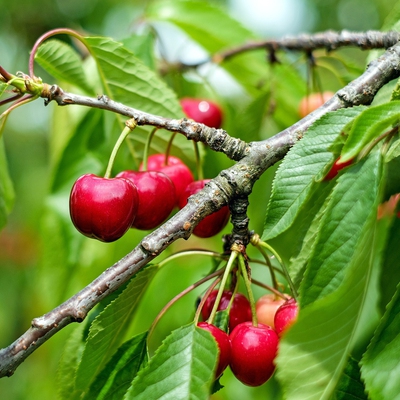A guide to growing Pomegranates in your garden. Includes sun requirements, planting tips, feeding, and more!
 Soil
Soil
What soil is good for Pomegranates?
Pomegranates will do well in most well draining soils. Mix in plenty of well rotted compost.
Like most fruit trees, Pomegranates require deep, well draining soil. They will not tolerate waterlogged soil and will develop root rot as a result. Avoid planting in heavy clay unless the soil has been amended. Heavy soils can be improved by incorporating gypsum and organic matter and mounding the soil before planting to improve drainage.
 Position
Position
How much sun do Pomegranates need?
Plant Pomegranates in a full sun position.
 Frost Tolerant
Frost Tolerant
Are Pomegranates frost tolerant?
Yes, Pomegranate trees are frost tolerant.
 Spacing
Spacing
How much space do Pomegranates need?
Space Pomegranate trees roughly 4m apart.
 Planting
Planting
When should I plant Pomegranates?
Late autumn or early spring is the best time to transplant most dormant plants. Plants, with the exception of bare-root, can be transplanted at anytime between when the ground thaws and when it freezes (so anytime if you are in a frost free climate). However, if transplanting in the heat of summer, you'll need to be diligent in watering and provide extra shade for your plant in the first few weeks after transplanting.
Dig a hole 2-3 times the width of the root ball. The hole should allow the plant to sit at the same level in the soil as it was previously. Fill the hole with soil ensuring the crown of the plant, where roots and stem meet, is level with the soil surface.
Plant out in the early morning or evening and/or on an overcast day. Avoid planting at peak sun times or on windy days, this will allow your plants to settle in comfortably and protect them from windburn and sunburn.
 Feeding
Feeding
What do I feed Pomegranates?
Top-dress the soil around the Pomegranate tree with well-rotted organic matter in spring, along with a balanced organic fertiliser throughout the season. Add a 2-3 inch layer of mulch around the tree up to the drip line to retain moisture (be careful not to pile mulch against the tree trunk as this may lead to trunk rot and disease).
 Harvesting
Harvesting
When can I harvest Pomegranates?
Pomegranates are usually ready for harvest 6-7 months after flowering.
Pomegranates vary in colour depending on the variety, so colour alone is not always the best indicator of ripe fruit.
As Pomegranates ripen, the seed sack swells causing the fruit to change from being perfectly round to slightly angular. The stem and the blossom end of the fruit also become flatter. Ripe pomegranates have a metallic sound when tapped.
 Pests
Pests
What pests do Pomegranates get?
Pests that affect Pomegranate include: Aphids, Thrips, Leaf-footed Plant Bugs, Mealy Bug, Omnivorous Leafroller, Pomegranate Fruit Borer, Citrus Flat Mite.
 Diseases
Diseases
What diseases do Pomegranates get?
Diseases that affect Pomegranate include: Cercospora Leaf Spot, Grey Mold, Alternaria Fruit Rot.
 Notes
Notes
Is there anything else I need to know about Pomegranates?
Prune the Pomegranate tree in order to remove old or unproductive wood. Open up the centre to let light and air in by removing any overlapping branches, this will help to prevent disease. Pruning is usually done in late winter before the new growth begins to emerge.
Prune off any unwanted suckers from the base of the plant to allow for more energy to be directed to the main plant.
 Troubleshooting
Troubleshooting
How do I troubleshoot my growing problems?
Cover the trees with netting to protect the fruit from birds. Pomegranate fruits may split in wet weather.
